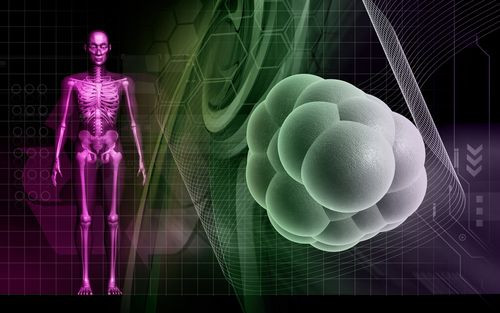Building Blocks For Cartilage, Bones Lies In Small Molecules And Stem Cells

Each year, thousands of accident victims, people with arthritis, or children born with congenital defects require bone or cartilage repair. Now scientists have come up with a technique of using small molecules to generate mouse cells that can form bone and cartilage. This technique, developed by scientists at the University of Texas Health Science Center at Houston (UTHealth), Monash University, and RIKEN Centre for Developmental Biology, promises to be less expensive and more feasible than current bone cell generation strategies. The research was recently published in the journal Development.
Current methods of bone and cartilage regeneration use adult stem cells. Stem cells play an important role in replacing or regenerating the diseased tissues. Adult human cells are transformed into cells that function similar to embryonic stem cells. But this method has proven to be very expensive and does not always meet with success.
"Current cell generation strategies generally use proteins to direct the stem cells to give rise to functional cells of interest. Such proteins act on the target cells through multiple mechanisms, not all of which necessarily help to achieve the overall goal [of generating chondrocytes]. In addition, proteins are unstable and expensive to make, and the cost is one of the hurdles that limits the ability of scientists to make the amounts necessary for clinical purposes," said lead researcher Naoki Nakayama in a statement.
To get around this, the team, led by Nakayama, took a different approach and worked on pluripotent stem cells from early mouse embryo. These cells have the potential to transform to any cell type. The team used small molecules to coax the embryonic stem cells to turn into cells called chondrocytes, the only cells that can form cartilage and then bone.
The reason for using small molecules is that they are generally longer-lasting than proteins in culture and also inexpensive to produce on a large scale, says Nakayama. “They can also allow a particular mechanism to be more precisely activated. Such strategies have already been used to replace protein factors with such small molecules to establish a better culture method for maintaining pluripotent embryonic stem cells and for induction of early neural precursor cells from them," he said.
The team also went a step further and used embryonic stem cells and small molecules to generate cells that were morphologically and functionally similar to chondrocyte precursor cells — paraxial mesoderm and sclerotome. These cells give rise to blocks of tissues that aid in the formation of the backbone and disc. When such cartilages was transplanted into mice, they were able to form bone-like structures.
Because the method can be used to produce large numbers of cartilage-forming chondrocyte precursors, it offers an excellent potential to develop repair mechanisms of damaged bones and cartilage in humans in the future, says the team.
Source: Nakayama N, Zhao Li, Trilok S, et al. Small molecule-directed specification of sclerotome-like chondroprogenitors and induction of a somatic chondrogenesis program from embryonic stem cells. Development. 2014.



























